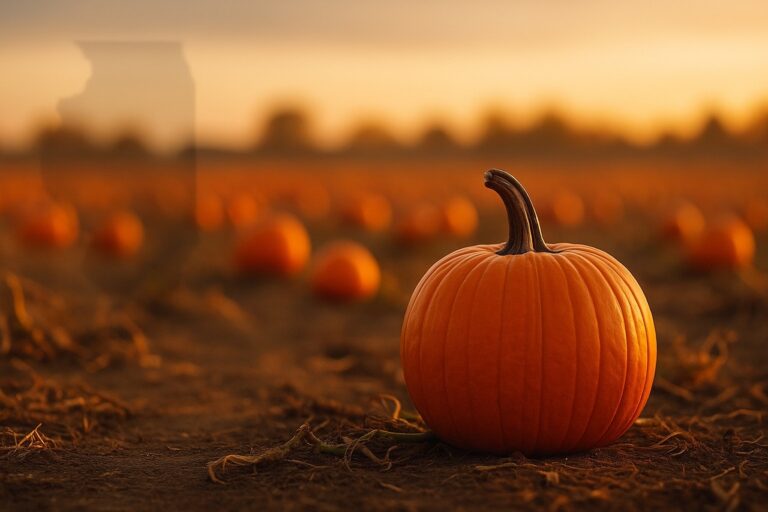Every fall, orange fields take over the Midwest, and Illinois stands at the center of it all. Farmers there pull in hundreds of millions of pounds each year, more than any other state in the country. Many of those pumpkins become pie filling or decorate homes across America. Morton proudly holds the title Pumpkin Capital of the World for good reason.
Pumpkins have a long story that began thousands of years ago in Central America. They now come in every size, from tiny table gourds to record giants weighing more than a ton. The season usually runs from late August through early November, drawing millions of visitors to farms and festivals across the nation.
Americans spend more than eight hundred million dollars on pumpkins each October, proving the crop still defines fall.
Keep reading to see why Illinois leads pumpkin production, how far the crop has traveled, and what makes it a symbol of the season.
Illinois And The Pumpkin Capital Of The World
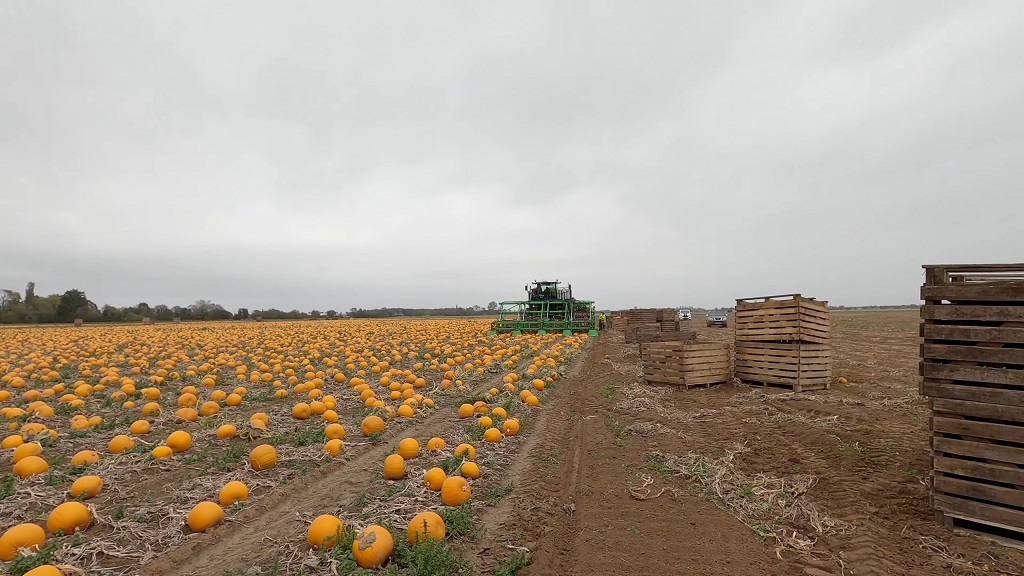
Illinois ranks first in pumpkin production across the United States by an enormous margin. Reports show that over 485 million pounds were harvested across the state.
Farms spread across central Illinois, especially in Tazewell, Mason, and Peoria counties, contribute most of the total.
The is known for long summer days, warm climate, and fertile soil. These conditions create the perfect setting for pumpkins to thrive.
Nearly all of the pumpkin fields grow varieties used for canning and pie filling.
Around 80 percent of all pumpkins processed for food in the U.S. come from Illinois.
Local farmers continue to balance old growing traditions with modern processing methods that maintain the state’s lead year after year.
Morton, The Pumpkin Capital Of The World
Morton, Illinois, carries the title “Pumpkin Capital of the World.” The small village gained that name through the massive Libbys processing plant that dominates the local industry.
Every fall, thousands of tons of pumpkins from nearby farms arrive for cleaning, slicing, and cooking before becoming canned pumpkin used in pies across the country.
The town celebrates this connection each year with a major pumpkin festival that attracts visitors from all over the Midwest.
Streets fill with parades, cooking contests, and displays featuring every variety of pumpkin imaginable.
US States That Produce The Most Pumpkins
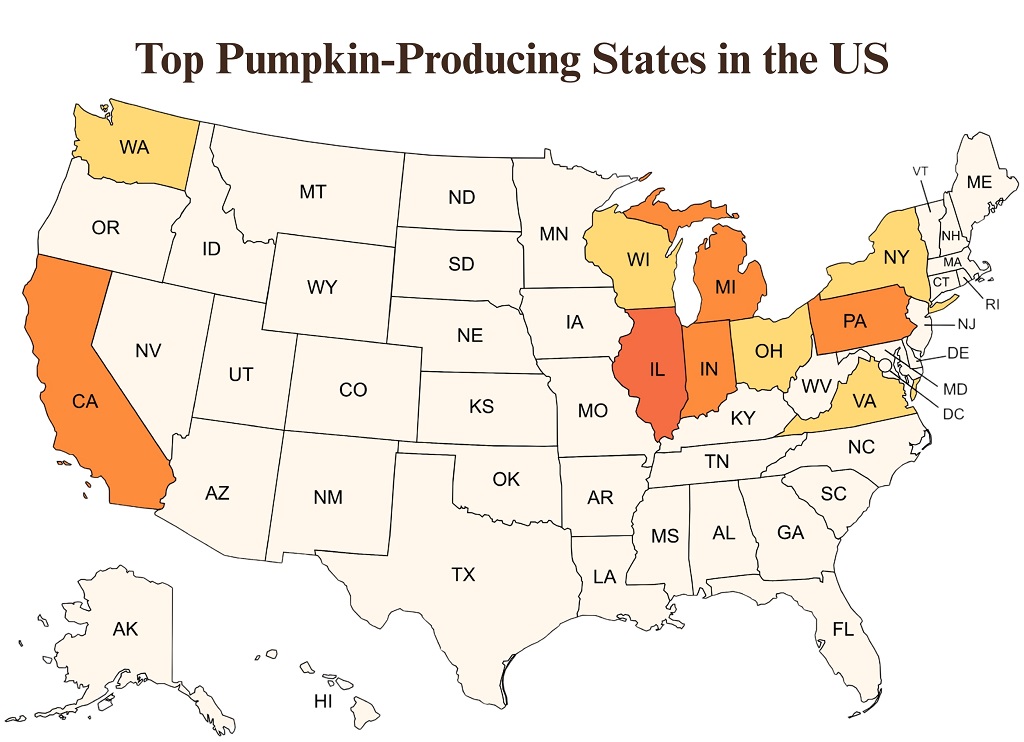
| State | Pumpkin Production (Pounds, 2024) |
|---|---|
| Illinois | 485,100,000 |
| Indiana | 159,750,000 |
| Pennsylvania | 108,800,000 |
| California | 105,750,000 |
| Michigan | 104,550,000 |
| Ohio | 67,500,000 |
| Washington | 57,000,000 |
| Virginia | 54,050,000 |
| Wisconsin | 49,600,000 |
| New York | 46,000,000 |
| Source: worldpopulationreview.com | |
Illinois remains the clear leader, producing about three times as many pumpkins as any other state. Indiana, Pennsylvania, California, and Michigan make up the next group of top producers.
Each region plays a role: Illinois focuses on processing pumpkins, while states like California and Pennsylvania emphasize fresh market and decorative varieties.
When Is Pumpkin Season In The United States?
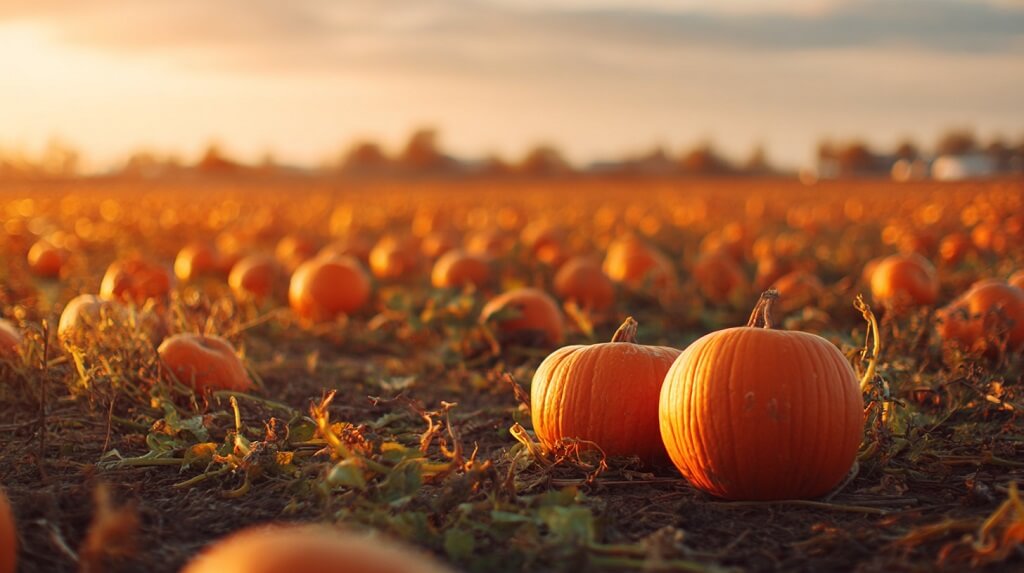
Pumpkin season begins when spring turns warm enough for seeds to sprout. Farmers across the Midwest and other major producing regions plant between late May and early June. The timing allows vines to grow strong before the height of summer heat.
By August, green vines start to fade and bright orange fruit begins to appear. The main harvest runs from mid-September through early November, when fields across Illinois, Indiana, and Pennsylvania reach their peak. Southern states like Texas and Virginia often extend harvest by a few weeks because of their warmer climate.
Rain and temperature shifts decide how long the season lasts each year. A dry summer shortens yields, while steady rainfall helps pumpkins fill out and reach full size. In Illinois, the balance of warm days and cool nights gives the crop its deep color and firm texture that make it perfect for pies and canning.
Pumpkin Sizes And World Records
Pumpkins appear in countless shapes and sizes. Fields across America hold everything from tiny decorative pumpkins that fit in one hand to giants that could fill the back of a pickup truck.
The most common carving pumpkins usually weigh between 10 and 20 pounds, while smaller pie pumpkins grown in Illinois and Indiana average 20 to 30 pounds with dense flesh suited for baking.
A visit to any fall festival or county fair shows how size has become a badge of pride among growers. Gardeners spend months focused on one pumpkin, trimming vines, enriching soil, and watering with precision. Each giant becomes a slow, careful experiment that tests both patience and skill.
Record-Breaking Pumpkins
- 2023 Half Moon Bay, California: Grower Travis Gienger set the current world record with a pumpkin weighing 2,749 pounds, the heaviest ever officially recorded.
- 2016 Belgium: Grower Mathias Willemijns produced a giant pumpkin weighing 2,624.6 pounds, holding the record for several years before it was surpassed.
- 2025 Half Moon Bay, California: Brandon Dawson of Santa Rosa won the Safeway World Championship Pumpkin Weigh Off with a pumpkin that weighed 2,346 pounds, the top entry of that year’s event.
The push for bigger pumpkins has become a friendly contest that connects communities around the world. Many record pumpkins come from the Atlantic Giant seed line, a variety developed over decades to achieve remarkable size and endurance.
What Makes The Giants Possible
- Fertile, well-drained soil with heavy organic content.
- Careful pruning so that energy feeds one main fruit.
- Steady watering during the hottest months.
- Balanced fertilization and daily observation.
Every successful grower knows that one missed detail can ruin months of work. Yet the excitement of lifting a pumpkin heavier than a small car each October keeps them going.
What is the Average size of a Pumpkin?
- Standard pumpkin patch type: 15–25 pounds.
- Small decorative pumpkin: under 5 pounds.
- Pie pumpkin grown in Illinois: 20–30 pounds.
- Large fair display pumpkin: 50–100 pounds.
Pumpkins define the heart of autumn. Their range in size, color, and purpose captures the balance between farming tradition and seasonal celebration that no other crop can match.
Fun Facts About Pumpkins
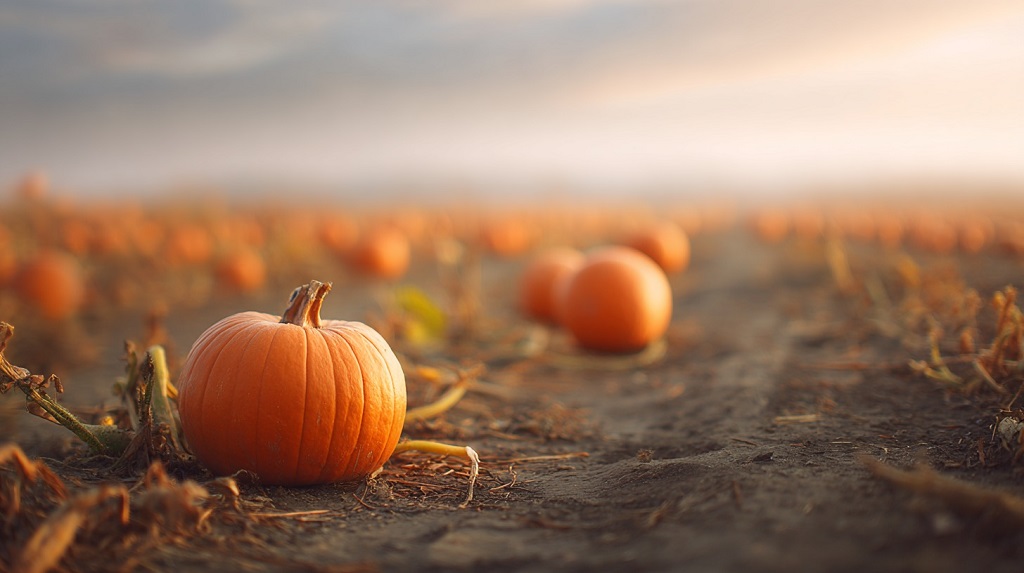
Pumpkins hold a special place in American culture, combining history, food, and tradition in one orange package.
The story stretches from ancient farmlands in Central America to modern pumpkin patches that fill every corner of the country each fall.
- A pumpkin contains about 90 percent water, which makes it light for its size.
- The world’s first pumpkin boat race used hollowed giant pumpkins that floated like kayaks.
- Every part of a pumpkin can serve a purpose, from the seeds used for oil to the fibrous strands turned into livestock feed.
- Pumpkin flowers bloom only for a few hours in the morning, which means bees have a very short window for pollination.
- The bright orange color comes from beta-carotene, the same compound that gives carrots their color.
- More than 1.5 billion pounds of pumpkins grow in the United States each year.
- The scent of cooked pumpkin is often found in products such as candles, skin creams, and even dog treats.
- Every state in the country grows pumpkins, including Alaska and Hawaii, though yields differ widely.
- The United States holds hundreds of local pumpkin festivals, with Illinois hosting some of the oldest and largest events.
The Bottom Line
Pumpkins fuel the energy of fall across the United States. Illinois drives that rhythm with fields that stretch for miles and farms that send canned pumpkin to every grocery shelf in the country.
Morton stands at the heart of it, turning bright orange fruit into the flavor that defines the month of October. Across other states, smaller farms open gates for families, host hayrides, and line roadsides with fresh pumpkins stacked high.
The season moves fast, but for a few weeks each year, America runs on the color orange, the smell of roasted seeds, and the pride of a harvest that still brings people together.
Read Next: Avondale, Chicago, Ranked in Top 5 Coolest Neighborhoods in The World

